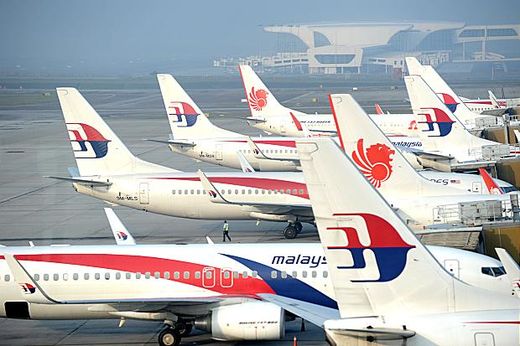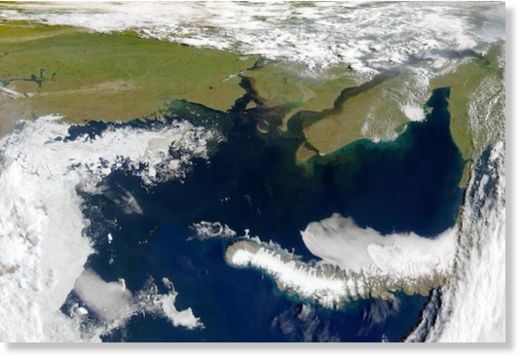"And if it does start a war, hopefully people will say, 'You know what? It was worth it. It was a good movie!'" - Seth Rogen
"Wacky dictators sell newspapers, and magazines - for example, the 2003 Newsweek cover depicting Kim [Jong Il] in dark sunglasses over a cover line that read 'Dr. Evil.' ... But demonization, and ridicule, can be dangerous. At its worst, dehumanizing the other side helps to lay the groundwork for war." - Donald Macintyre
Representations of North Korea as a buffoon, a menace, or both on the American big screen are at least as old and arguably as tired as the George W. Bush-era phrase, "the axis of evil." Along with the figure of the Muslim "terrorist," hackneyed Hollywood constructions of the "ronery" or diabolical Dr. Evil-like North Korean leader bent on world domination, the sinister race-bending North Korean spy, the robotic North Korean commando, and other post-Cold War Red/Yellow Peril bogeymen have functioned as go-to enemies for the commercial film industry's geopolitical and racist fantasies. Explaining why the North Korean leader was the default choice for the villain in his 2014 regime-change comedy,
The Interview, Seth Rogen has stated, "It's not that controversial to label [North Korea] as bad. It's as bad as it could be."
1Indeed, one-dimensional caricatures of North Korea flourish in the Western media in no small part because "[w]acky dictators sell."2 Yet when it comes to Hollywood's North Korean regime-change narratives, the line between fact and fiction, not to mention the distinction between freedom of expression and government propaganda, is revealingly thin. Whether in Hollywood or Washington, the only permissible narrative for North Korea is what Donald Macintyre, former Seoul bureau chief for Time magazine, has called "the demonization script."3
Not only have the dream machines of the entertainment industry long played an instrumental role within American theaters of war, but also, U.S. officials and political commentators often marshal the language of entertainment - for example, the description of U.S.-South Korea combined military exercises as "war games" and the Obama administration's references to the Pentagon's "playbook" with regard to North Korea - when describing U.S. military maneuvers on and around the Korean peninsula.
Beyond the American entertainment industry's insatiable appetite for evildoers, how might we account for the anachronistic place of North Korea as a Cold War foe that outlasted the end of the Cold War within Hollywood's post-9/11 rogues' gallery? With the eyes of the world trained on various flashpoints in the Middle East, what mileage of any kind can be gotten from the North Korean "bad guy" in Hollywood? If American moviegoers might be depended on to possess a vague awareness of geopolitical context, perhaps even to have some sense of the history of U.S. "hot" involvement subtending Hollywood's latest Islamophobic interventionist adventure, by contrast, North Korea, routinely depicted in the U.S. media as shrouded in mystery and beyond comprehension, can be counted on to draw a complete blank.
Truth, we are often told, is wilder than our wildest imaginings in North Korea, therefore the rule-of-thumb when it comes to representing North Korea in Hollywood appears to be that anything goes - even films featuring Kim Jong Un's head deconstructing and bursting into flames. Violent spectacle thus stands in for substantive treatment, leaving more complex truths about North Korea elusive. It is worth recalling that North Korea has been dubbed a "black hole" by former CIA director Robert Gates, "the longest-running intelligence failure in the history of espionage" according to ex-CIA Seoul station chief and former U.S. ambassador to South Korea Donald Gregg, and the "Heart of Darkness" in the words of congresswoman Ileana Ros-Lehtinen.4It's against this backdrop of near-total ignorance about North Korea, a place about which Americans possess great conviction but little knowledge, that North Korea serves as a malleable screen onto which the entertainment industry's fantasies can be projected - fantasies that reflect less reality about North Korea than commentary about Hollywood's own murky ideological substratum.
Here, it merits considering two post-9/11, "axis of evil" films that move in opposite directions but intersect with U.S. policy in ways few critics have observed: Red Dawn 2, MGM's 2012 reboot of the 1984 Cold War original, in which North Korean invaders vaingloriously attempt regime change on U.S. soil only to be outdone by a pack of suburban American teenagers who call themselves "the Wolverines," and The Interview, Sony's 2014 screwball comedy in which a fatuous American TV talk show host and his producer are enlisted by the CIA to "take out" Kim Jong Un as a sure-fire means of ensuring North Korean regime collapse.5 If Red Dawn 2, described by Wired as "the dumbest movie ever," inadvertently descended into farce by expecting that American viewers would "take North Korea seriously as an existential threat," The Interview, catapulted to unlikely world-historical importance, has become the focus of serious controversy and incessant Western media commentary.6
North Korea furnishes the central villain in The Interview - though, in this case, a rube of a "dictator" who has crippling "self-esteem and 'daddy issues,'" according to leaked Sony emails.7 Yet, in the media-storm around the Sony hacking, North Korea has transitioned beyond the screen into an easy fall guy. At a juncture in which the White House has turned a new page with Cuba, even going so far as to describe a half-century of ineffectual U.S. isolationist policy aimed at Cuban regime change as a failure, North Korea, also long the target of U.S. regime-change designs, risks resuming its old place on the State Department's list of state sponsors of terrorism from which it had been removed, by George W. Bush no less, in 2008.8 In other words, at a moment when Cuba stands to step off the four-country list, which also includes Iran, Sudan, and Syria, North Korea, accused of hacking into Sony and issuing terrorist threats over the release of The Interview, faces the prospect of stepping back on.9
At this moment, we are thus witness to two radically different dynamics: the prospect of long-awaited rapprochement, normalization, and engagement with Cuba in stark contrast to a war of words, threats of retaliation, and escalation when it comes to North Korea. In reference to the hacking of Sony, which the FBI has insisted can be traced to North Korea - an assertion of culpability that The New York Times dutifully reported as fact despite proliferating assessments and overwhelming opinion to the contrary in the larger cyber-security community - U.S. State Department spokeswoman Marie Harf, on December 22, 2014, laid out an astonishing injury claim, on Sony's behalf, against North Korea: "The government of North Korea has a long history of denying its destructive and provocative actions and if they want to help here they can admit their culpability and compensate Sony for the damage, damages that they caused."10
Yet missing in this lopsided discussion of reparations and national amnesia is any grappling, on the part of the United States, with the profound human costs of six decades of hostile U.S. intervention on the Korean peninsula, much less the fact that the official relationship between the United States and North Korea remains one of unfinished war. In the mid-twentieth century, the United States, which set the stage for bloodshed by cleaving the Korean peninsula in two with no Korean input in 1945, and by supporting separate elections in the South in 1948, then militarily intervened in 1950 on behalf of its South Korean ally Syngman Rhee (a ruthless dictator, no doubt, but "our guy," in the parlance of the Cold War State Department) in a war of national reunification that followed.
That war, the Korean War, remains tragically unresolved to this day. During the war's battle-phase, the United States wielded near-total aerial superiority, an index of asymmetrical warfare, to devastating consequences, especially in the North. When the dust settled, an estimated four million Koreans has been killed, seventy percent of whom were civilians, millions more were transformed into refugees, and one in three Korean families was separated by a dividing line that had been hardened by war into an impassable, intensely fortified, militarized border, which U.S. presidents ever since have referred to as "Freedom's Frontier."
As historian Bruce Cumings notes, memory plays out differently north of the DMZ:
"What is indelible is the extraordinary destructiveness of the American air campaigns against North Korea, ranging from the widespread and continuous use of firebombing (mainly with napalm), to threats to use nuclear and chemical weapons, and finally to the destruction of huge North Korean dams in the final stages of the war."11
This memory of ruin, so central to North Korea's consolidation as a state, registers little, if at all, within the United States where the Korean War is tellingly referred to as "the Forgotten War." Indeed, few in the United States realize that this war is not over, whereas no one in North Korea can forget it.
Yet, whether they realize it or not, Americans view and naturalize North Korea through a lens that is clouded by the fog of an unfinished war. In what has unfurled as one of the strangest PR campaigns for a Hollywood Christmas release ever, the FBI's assertions that North Korea was behind the cyberattack on Sony - an intelligence assessment presented without evidence yet framed as self-sufficient fact by the Obama administration - highlights the centrality of intelligence as the filter through which we are urged to perceive North Korea and other historic enemies of the United States.
It is worth remarking that the two primary ways that Americans "know" North Korea are through forms of intelligence - defector and satellite, precisely the two types of supposedly airtight evidence that then-Secretary of State Colin Powell presented to the UN Security Council in early 2003 as incontrovertible "proof" that Iraq possessed weapons of mass destruction. Then as now, information about a longstanding U.S. military target is not aimed at producing a truthful picture about that society or its leadership but rather at defeating the supposed enemy - in short, paving the way to regime change. It is precisely within this haze of disinformation about North Korea that Hollywood churns out films that walk in lockstep with a relentless U.S. policy of regime change.
With Obama stepping into the role of booster-in-chief for The Interview, we might examine the blurred lines between what both the U.S. President and Seth Rogen have insisted is an issue of freedom of speech and artistic expression, on the one hand, and government propaganda, on the other. The collusion between Sony, the White House, and the military industrial complex, as revealed by leaked emails, merits a closer look. Not only did Obama, in his final 2014 press conference, manage to avoid any discussion of the CIA torture report, but also he gave outsized attention to a film that Sony had reportedly shelved, in effect giving an invaluable presidential thumbs-up for The Interview .
With the spectacle of North Korea implausibly rearing its head in the president's remarks as "the biggest topic today," the pressing issue of U.S. accountability for torture, with even major media outlets calling for a criminal probe into the responsibility of former Vice President Dick Cheney, former CIA director George Tenet, legal architect John Yoo, among others, was deflected.12 Instead, North Korea was launched to front-page news and Sony's temporary, arguably savvy, PR decision to pull The Interview was framed, in accordance with Obama's comments, as a capitulation to censorship by "some dictator someplace."13
We might ask: what political capital stands to be gained from maintaining a hard line on North Korea, at a moment of détente with Cuba? As hacked emails from the head of Sony Entertainment, Michael Lynton, disclose, Sony's tête-à-tête with the Obama administration over The Interview must be dated back to the production stage. Having screened a rough cut of the film at the State Department, Sony appears to have queried officials, including Special Envoy for Human Rights in North Korea, Robert King, specifically about what it worried was the over-the-top violence of the head-exploding assassination scene of Kim Jong Un (played by Randall Park). Harboring no such qualms, the State Department gave the green light.
Asked by The New York Times in a December 16, 2014 interview whether they were frightened by "the initial ambiguous threats that North Korea made," lead actor James Franco stated, "They went after Obama as much as us," adding in tongue-in-cheek fashion, "Because Obama actually produced the movie." Seth Rogen, co-lead and, along with Evan Goldberg, co-director of The Interview, clarified, "They don't have freedom of speech there, so they don't get that people make stuff."14 Within the space of the same NYT interview, however, Rogen offered a less innocuous account of the production process: "Throughout this process, we made relationships with certain people who work in the government as consultants, who I'm convinced are in the C.I.A." Indeed, in addition to State Department officials, Bruce Bennett, a North Korea watcher and regime-change advocate at the Rand Corporation, the U.S. military-funded think tank, and a consultant to the government on North Korea, also served as a consultant with Sony on this film. His primary, albeit hardly novel, thesis on North Korea is that the assassination of the North Korean leader is the surest way of guaranteeing regime collapse in North Korea. In a June 25, 2014 email to Sony Entertainment CEO, Lynton, who also sits on the Rand Board of Trustees - an indication of Sony's cozy relationship with the military industrial complex - Bennett implied that a North Korean regime-change cultural narrative, by dint of its politicized reception within the Korean peninsula, might oil the machinery of actual regime collapse. As he put it, referring to his 2013 book, Preparing for the Possibility of a North Korean Collapse,
"I have been clear that the assassination of Kim Jong-Un is the most likely path to a collapse of the North Korean government. Thus while toning down the ending [the assassination scene] may reduce the North Korean response, I believe that a story that talks about the removal of the Kim family regime and the creation of a new government by the North Korean people (well, at least the elites) will start some real thinking in South Korea and, I believe, in the North once the DVD leaks into the North (which it almost certainly will). So from a personal perspective, I would personally prefer to leave the ending alone."15
In their defense of the film's creative integrity (prior to the email leaks), both Rogen and Goldberg claimed that their decision to explicitly identify the North Korean leader of the film as "Kim Jong Un" was met with "some resistance" at Sony, yet as The Daily Beast subsequently reported,
the leaked emails "strongly suggest that it was Sony's idea to insert Kim Jong Un in The Interview as the film's antagonist" following consultation with "a former cia [sic] agent and someone who used to work for Hilary [sic] Clinton."16Perhaps none of this should come as a surprise. Hollywood, after all, has given us Black Hawk Down , Zero Dark Thirty , Argo , and other propaganda films. Yet it runs counter to a reading of The Interview as harmless entertainment, much less as a matter of freedom of speech or pure artistic expression. It might also remind us that culture, when it comes to U.S. enemies, has always been a terrain of manipulation and war. During the Korean War's hot-fighting phase, the United States dropped a staggering 2.5 billion propaganda leaflets on North Korea as part of its psy-war "hearts and minds" operations. Throughout the Cold War, the CIA, as is well-known, funded American arts and letters in a kulturkampf with the socialist bloc, maneuvering behind the scenes to foster "democratic" cultural expressions that would, in turn, be held up as evidence of the superiority of the culture of American freedom.
Today, the National Endowment for Democracy (NED), a supposedly non-governmental agency established in the Reagan era to do what the CIA did covertly during the Cold War and funded almost entirely by Congress, sponsors and disseminates defector narratives, what the CIA calls "human intelligence," as the truth about North Korea.17 Central to NED's objectives is the promotion of "second cultural" products about target or "priority" countries, for example, the "dissemination of books, films or television programs illuminating or advocating democracy," as a means of delegitimizing and ultimately destabilizing the leadership of "closed societies."18 In its work on North Korea, NED supports defector organizations in South Korea and Japan, which it mobilizes as an exogenous alternative to North Korean civil society - a second culture whose propaganda can be infiltrated via radio broadcast, balloon drops, smuggled USB drives, and other underground distributional means into North Korea.
Although leaked emails indicate that Sony's South Korean division opted early on not to screen The Interview in South Korea, citing an aversion to its caricature of the leader of North Korea and spoof of a "North Korean" accent, South Korea's centrality as a site for a more sinister distribution of the film might give us some pause.19 Much along the lines advocated by Bennett, organizations like the U.S.-based, right-wing Human Rights Foundation headed by the self-professed Venezuelan "freedom fighter" Thor Halvorssen Mendoza as well as South Korean defector groups asserted their readiness, even prior to Sony's temporary pulling of the film, to conduct illegal balloon drops of DVD copies of The Interview from South Korea into North Korea. We might note that one of the Korean subheadings on Sony's promotional poster for the film reads explicitly to a North Korean audience: "Don't believe these ignorant American jackasses." Of the film's propagandistic value, Halvorssen, who describes comedies as "hands down the most effective of counterrevolutionary devices" - here, echoing Rogen's cavalier assessment of the film's supposedly subversive potential, "Maybe the tapes will make their way to North Korea and start a fucking revolution" - told Newsweek , "Parody and satire is powerful. Ideas are what are going to win in North Korea. Ideas will bring down that regime."20

Propaganda Balloon Drops Launched into North Korea by Human Rights Foundation.
. Here, Hollywood's North Korean "bad guy" merits critical consideration against the context of U.S. policy, past and present, within a larger Asia-Pacific region in which the United States seeks to ensure its dominance. Although Barack Obama's foreign policy is unavoidably identified with the Middle East where he has continued and intensified Bush's interventionist policies, his foreign policy vision from the outset has been explicitly oriented toward the Pacific. As Obama's Secretary of State, Hillary Clinton signaled the significance of Asia by making it her first overseas destination, bypassing Europe, the customary grand tour destination for her predecessors. Offering a blueprint of twenty-first-century U.S. power designs within the Asia-Pacific region, which he identified as America's "future," "the world's fastest-growing region," and "home to more than half the global economy," Obama, in a November 2011 speech before the Australian Parliament, stated, "Our new focus on this region reflects a fundamental truth - the United States has been, and always will be, a Pacific nation."
21 As both Obama and members of his administration have taken pains to convey, the United States must be globally understood to be "a Pacific power."
22Ripped from the script of Red Dawn 2, the bait-and-switch narrative Obama has adhered to with regard to Asia and the Pacific requires North Korea to fulfill a necessary devil-function. Here, it is worth recalling that in 2012, MGM, facing a barrage of criticism from news media in China - not coincidentally the second largest movie market in the world, one that brought Hollywood an estimated $1.4 billion dollars in the year of Red Dawn 2's release - announced it had decided, at the eleventh hour, to replace the film's Chinese bad guys with North Korean villains. North Korea, of little significance as an open consumer market in today's global entertainment industry, could be pasted in as China's proxy, with few financial consequences. Digitally altering PRC flags, military insignia, and propaganda posters to appear "North Korean" would cost the studio well over a million dollars in the post-production phase. Although Obama's policy toward North Korea has officially been one his advisers dub "strategic patience," or non-engagement, North Korea has served as a cornerstone in this administration's interventionist approach toward the Asia-Pacific region. Although an expanded American military role in the region, including a "rebalancing" of U.S. naval forces to 60% (in contrast to 40% in the Atlantic), may be aimed at containing a rising China, the growing U.S. regional military presence, under Obama's "pivot" policy, has been overtly justified by the specter of a nuclear-armed, volatile North Korea.
Not merely the stuff of Hollywood fantasies, North Korea, inflated as an existential menace, has been indispensable, for example, to "the deployment of ballistic missile defenses closer to North Korea," not to mention sales of surveillance drone technology to regional allies.23
Indeed, central to the staging of U.S. forward-deployed missile defense systems - Aegis, Patriot, and THAAD (Terminal High-Altitude Area Defense) - in and off the coast of Hawai'i, Guam, Taiwan, Japan, Okinawa, and South Korea (including, eventually on Jeju Island) has been the purported dangers posed by an armed, dangerous, and totally unpredictable North Korea to both the western coast of the United States and regional allies in the Pacific. In recent years, this portrait of an unhinged, trigger-happy North Korea has justified the acceleration of the THAAD missile-defense system in Guam, a second U.S. missile defense radar deployed near Kyoto, Japan, the positioning of nuclear aircraft carriers throughout the Pacific, and lucrative sales of military weapons systems to U.S. client-states through the Asia-Pacific region.
Albeit all key elements in U.S. first-strike attack planning, this amplified militarization of the "American Lake" is justified by the Pentagon as a "precautionary move to strengthen our regional defense posture against the North Korean regional ballistic missile threat."24 As early as June 2009, then-Secretary of Defense Robert Gates, in announcing the deployment of both the THAAD and sea-based radar systems to Hawai'i, explained, "I think we are in a good position, should it become necessary, to protect American territory" from a North Korean threat.25 In early April 2013, in a press release announcing its missile defense deployment throughout the Asia-Pacific region, the Pentagon stated, "The United States remains vigilant in the face of North Korean provocations and stands ready to defend U.S. territory, our allies, and our national interests."26 Advertised as safeguarding "the region against the North Korean threat," the X-band radar system, which the United States sold to Japan "is not directed at China," as U.S. officials were careful to state, but simply a defensive measure undertaken in response to the danger posed by Pyongyang.27
As critics have pointed out, "There is...nothing 'defensive'" about any of this, least of all the "B-52 and B-2 nuclear strategic bombers," which the Obama administration put into play in early 2013 on the Korean peninsula.28 Indeed, such "flights were designed to demonstrate, to North Korea in the first instance, the ability to conduct nuclear strikes at will anywhere in North East Asia."29 Yet, even as the North Koreans have had to hunker down, with "single-minded unity," in preparation for the prospect of a David-and-Goliath showdown with the United States, the true audience of the U.S.-directed dramaturgy of war styled as the "pivot" policy unquestionably has always been China.
Claiming to have done conducted "a lot" of research on North Korea, Seth Rogen has insisted that The Interview holds up a mirror to North Korea's reality: "We didn't make up anything. It's all real." His conclusion about North Korea after conducting exhaustive research? "It was f - king weird."30 Yet, even as the curtains go up in movie theaters across the United States for The Interview, the centrality of the North Korean demon to Obama's pivot policy within Asia and the Pacific, itself a historic theater of U.S. war, may prove to be far stranger than fiction.
Christine Hong is an assistant professor at University of California Santa Cruz. She is on the executive board of the Korea Policy Institute, the coordinating committee of the National Campaign to End the Korean War, and part of the Working Group on Peace and Demilitarization in Asia and the Pacific.
Notes
1 Josh Rottenberg, "Seth Rogen and Evan Goldberg Like that Kim Jong Un Doesn't Get the Joke," LA Times 3 December 2014 . As Rogen's comments in this interview with the LA Times reveal, the biographical particulars of the North Korean leader did not matter; indeed, one leader was interchangeable for another. Rogen and his fellow filmmaker Evan Goldberg initially envisioned Kim Jong Il as the arch-villain of the film but, with his death in December 2011, simply replaced him with Kim Jong Un.
2 Donald Macintyre, "U.S. Media and the Korean Peninsula," Korea Witness: 135 Years of War, Crisis and News in the Land of the Morning Calm, ed. Donald Kirk and Choe Sang Hun (Seoul: EunHaeng Namu, 2006), 404.
3 Ibid., 407.
4 As quoted in Don Oberdorfer, The Two Koreas: A Contemporary History (New York: Basic-Perseus Books, 2001) 60; "North Korea's Heart of Darkness," Dong-A Ilbo, 23 May 2012, available here.
5 Sandy Schaefer, "'The Interview' Red Band Trailer: Rogen and Franco Serve Their Comedy," Screen Rant, September 2014.
6 David Axe, "North Korea Invades America in Dumbest Movie Ever," Wired 4 August 2012.
7 Sam Biddle, "Leaked Emails: Sony Execs Scared of 'Desperately Unfunny' Interview," Defamer, 15 December 2014.
8 As reported in The Daily Beast, Obama, in clarifying a new U.S. policy approach to Cuba, stated, "'I do not believe we can continue doing the same thing for five decades and expect a different result,' said Obama in a none-too-subtle allusion to a popular definition of insanity." See Christopher Dickey, "Obama Realizes What 10 Presidents Didn't: Isolating Cuba Doesn't Work," The Daily Beast, 18 December 2014.
9 See Amy Chozick, "Obama Says He'll Weigh Returning North Korea to Terror List," The New York Times, 21 December 2014.
10 State Department, Daily Press Briefing, Washington, DC, 22 December 2014. Noting that a heavy regime of U.S. and international sanctions prevents direct financial dealings with North Korea, AP reporter Matt Lee asked Harf to clarify what she meant by "compensation": "'How could Sony legally accept compensation from North Korea? Is there an exception?' Lee asked. 'Because as far as I know, if you're getting a payment, a direct payment, from the North Korean government, you're breaking the law.'" See "Reporter Dismantles State Dept Suggestion that North Korea Pay Compensation to Sony," Free Beacon, 22 December 2014. On skepticism from cyber-security experts that North Korea was responsible for the hacking, see Elissa Shevinsky, "In Plain English: Five Reasons Why Security Experts Are Skeptical North Korea Masterminded the Sony Attack," Business Insider,22 December 2014 and Marc Rogers, "No, North Korea Didn't Hack Sony," The Daily Beast,24 December 2014.1
1 Bruce Cumings, "On the Strategy and Morality of American Nuclear Policy in Korea, 1950 to the Present," Social Science Japan Journal 1:1 (1998): 57.
12 "Remarks by the President in Year-End Press Conference," The White House, 19 December 2014; The New York Times Editorial Board, "Prosecute Torturers and Their Bosses," The New York Times, 21 December 2014.
13 "Remarks by the President in Year-End Press Conference."
14 Dave Itzkoff, "James Franco and Seth Rogen Talk about 'The Interview,'" The New York Times, 16 December 2014.
15 Although purportedly an expert on the Korean peninsula, Bennett offers an assessment of South Korean receptivity to The Interview that is contradicted by Sony's own internal emails. Fearing controversy, Sony's South Korean division passed on opening the film in South Korea. For an account of how another "axis of evil" film, the Bond thriller, Die Another Day (2002), incited widespread protests in South Korea, see Hye Seung Chung, "From Die Another Day to 'Another Day': The South Korean Anti-007 Movement and Regional Nationalism in Post-Cold War Asia," Hybrid Media, Ambivalent Feelings, ed. Hyung-Sook Lee, special issue of Spectator 27:2 (2007): 64-78.
16 Rottenberg, "Seth Rogen and Evan Goldberg Like That Kimg Jong Un Doesn't Get the Joke"; William Boot, ""Exclusive: Sony Emails Say Studio Exec Picked Kim Jong-Un as the Villain of 'The Interview,'" The Daily Beast,18 December 2014.
17 On this point, William Blum writes: "Allen Weinstein, who helped draft legislation establishing NED, was quite candid when he said in 1991: 'A lot of what we do today was done covertly 25 years ago by the CIA.'" See William Blum, Rogue State: A Guide to the World's Only Superpower (Monroe, ME: Common Courage, 2000), 180.
18 NED, "Statement of Principles and Objectives: Strengthening Democracy Abroad: The Role of the National Endowment for Democracy," NED.19 See Biddle, "Leaked Emails."
20 Josh Eells, "Seth Rogen's 'Interview': Inside the Film North Korea Really Doesn't Want You to See," Rolling Stone, 17 December 2014; Paul Bond, "Sony Hack: Activists to Drop 'Interview' DVDs over North Korea via Balloon,"The Hollywood Reporter, 16 December 2014; Katherine Phillips, "Activists to Send DVDs of 'The Interview' to North Korea by Balloon," Newsweek, 17 December 2014.
21 Barack Obama, "Remarks by President Obama to the Australian Parliament," 17 November 2011.
22 Hillary Clinton, "America's Pacific Century," Foreign Policy, 11 October 2014.
23 Barbara Starr and Tom Cohen, "U.S. Reducing Rhetoric That Feeds North Korea's Belligerence," CNN 13 April 2013.
24 Department of Defense, News Release No. 208-13, 3 April 2013.
25 John J. Kruzel, "U.S. Prepares Missile Defense, Continues Shipping Interdictions," U.S. Department of Defense, 18 June 2009.
26 "Department of Defense Announces Missile Deployment," Press Release, Department of Defense, 3 April 2014.
27 Lolita Baldor and Matthew Lee, "US and Japan Revamp Defense Alliance to Counter North Korean Threat," Business Insider, 3 October 2013.
28 Peter Symonds, "Obama's 'Playbook' and the Threat of Nuclear War in Asia," World Socialist Web Site, 5 April 2013.29 Ibid.
30 Judy Kurtz, "FLASHBACK - Seth Rogen: No Regrets about Making 'The Interview,'" the Hill,17 December 2014.
This entry passed through the Full-Text RSS service - if this is your content and you're reading it on someone else's site, please read the FAQ at http://fivefilters.org/content-only/faq.php#publishers.

















